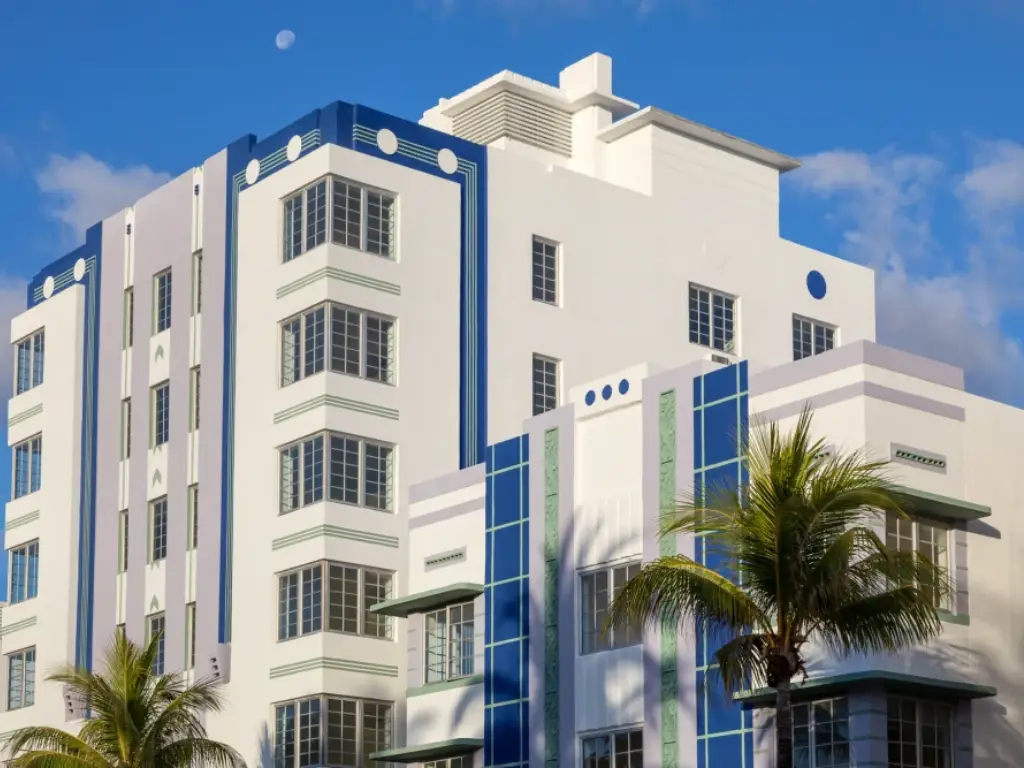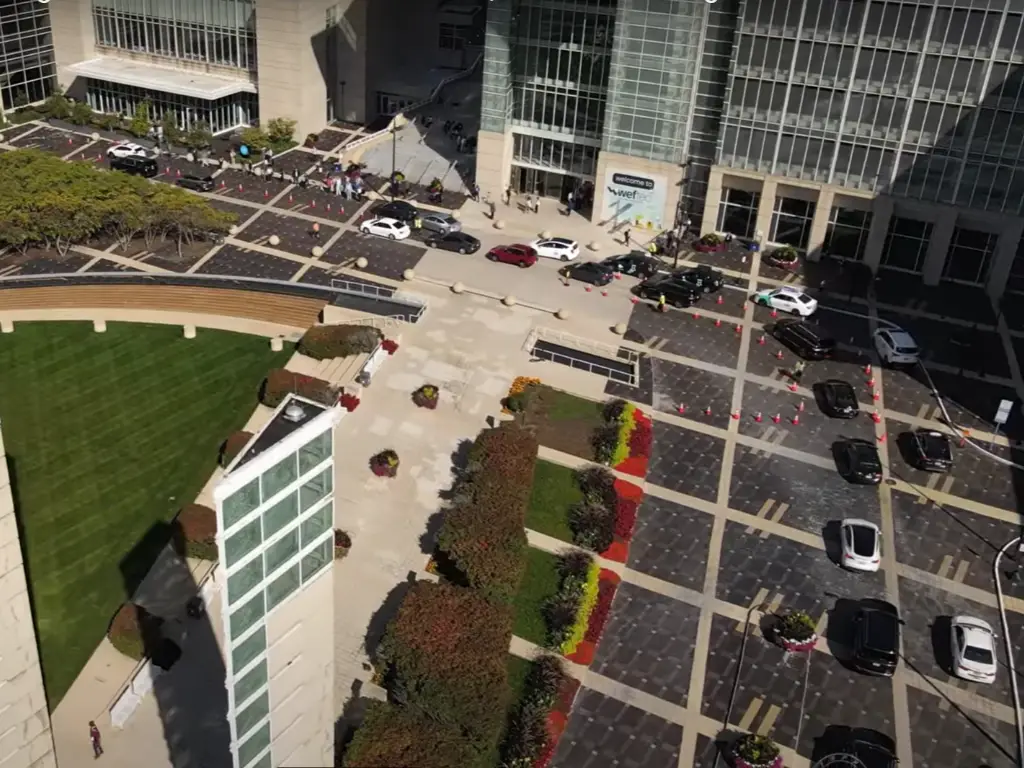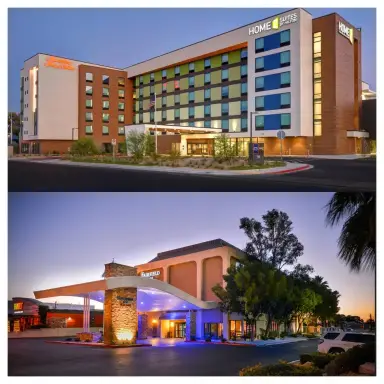Trade shows offer some opportunities to boost brand awareness, collect information about the market, and strengthen customer relationships. CEIR has found out that trade shows can contribute up to 20% of a company’s new business, which confirms the effectiveness of the tool. It is helpful if you are going to participate in a trade show for the first time or if you want to improve your strategy for the next event. Starting from the definition of clear and strategic goals to proper follow-up, this guide allows you to get the most out of all the opportunities for development and success in events.
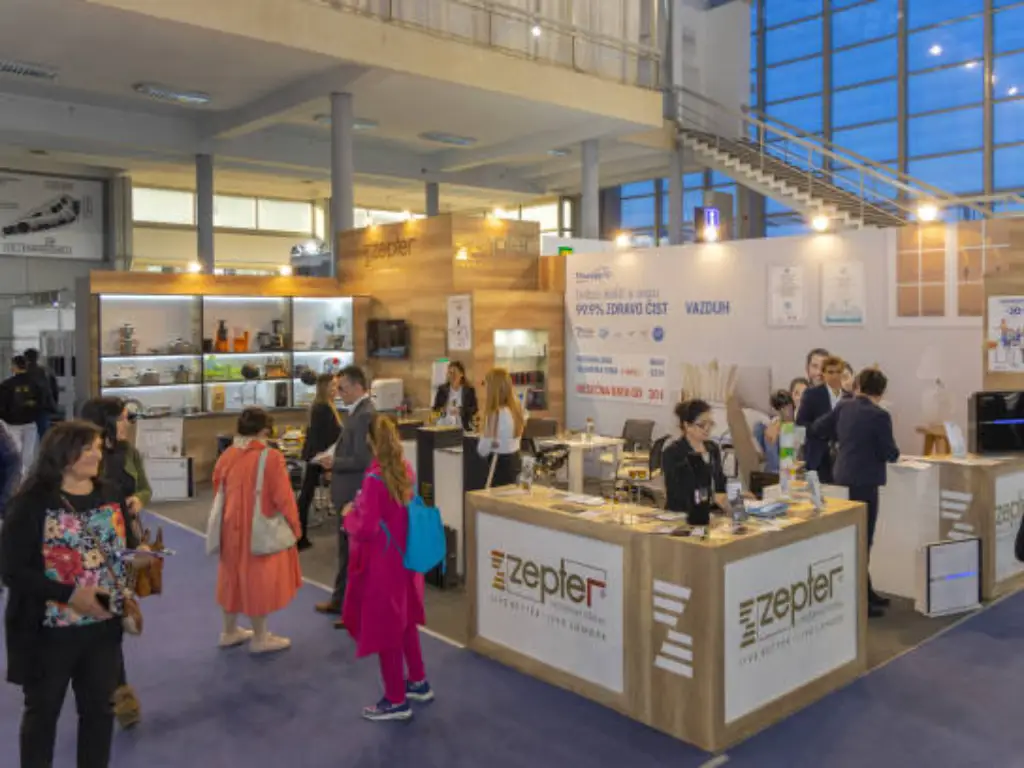
Setting Goals: Paving the Way to Success
For the participation to be successful, it is necessary to set specific, measurable, achievable, relevant, and time-bound goals. These will help in your marketing planning and will help your marketing activities be aligned with the stakeholders. Whether your objectives are to raise awareness of your brand or to increase the number of leads you collect, goal definition is the first step in your trade show planning process.
- ● What are the goals that you would like to achieve during the trade show, for instance, promoting certain products or services?
- ● What will be the signs of success? Is it going to be in terms of the number of new connections made or the level of social media engagement?
- ● Are your objectives realistic in light of the resources available to the team and the size of the team? What steps can you take to ensure that they are achievable?
- ● How are these goals connected to your company’s strategic vision and how will they assist the business to develop?
- ● What are your timelines for these goals and which of the following will help you to monitor progress during and after the event?
Creating a Trade Show Preparation Timeline
It is important to develop a trade show checklist that would encompass all the dates and the exhibit specifications. This timeline should include all the activities that you intend to carry out in preparation for the event, such as market research, designing booth space, and creation of marketing tools among others. Check critical items to ensure that none is missed and explain to your team how the set goals can be met.
| Timeframe | Key Tasks |
| 12 Months Before | ● Conduct market research to identify relevant trade shows. ● Set your budget and objectives aligned with company goals. ● Begin exhibit design discussions and explore booth space options. |
| 9 Months Before | ● Secure booth space and confirm logistics such as travel arrangements. ● Finalize exhibit design and start production planning. ● Start developing marketing strategies and materials. |
| 6 Months Before | ● Ramp up marketing campaign efforts, including email campaigns and social media promotion. ● Arrange for promotional items and giveaways. ● Coordinate training sessions for your team. |
| 3 Months Before | ● Review all logistical details, including shipping and delivery dates. ● Double-check important deadlines for all deliverables. ● Prepare lead retrieval systems and finalize any tech requirements. |
| 1 Month Before | ● Conduct a full run-through with your team, reviewing all procedures. ● Confirm travel arrangements and accommodation. ● Print all necessary marketing materials and ensure the booth is ready. |
| 1 Week Before | ● Verify that all shipments have arrived and setup tasks are scheduled. ● Ensure all team members are informed of their roles and schedules. ● Conduct final briefings and handle any last-minute adjustments. |
| Day of the Event | ● Arrive early to oversee booth setup and address any immediate issues. ● Ensure all technology is functioning and materials are displayed correctly. ● Engage with attendees, collect leads, and facilitate scheduled presentations. |
Market Positioning: Identifying Opportunities and Competition
In the case of developing an exhibition strategy, market research is the first step, which gives the necessary information about the target market and competitors. This kind of research enables firms to discover such chances and adapt their trade show plans in the process.
One of the main objectives of market research is to identify the target market correctly. Knowing the general characteristics of the trade show’s target audience and their requirements helps to make the appropriate changes to the information presented and the booth layout. For example, reviewing the previous attendees’ backgrounds and interests can identify potential buyers of your products.
At the same time, the analysis of competitors is also crucially significant. It is also important to note the strategies that competitors are using in product presentation, marketing, and even the booth design and layout to note areas that need to be filled and get ideas on the strategies to use for the next time, while at the same time making sure that the booth is unique and different from those of the competitors.
To optimize your exhibition strategy to meet market demands, consider these approaches:
- ● Personalized Interactions: Design customer experiences that enable the attendees to interact with your products in a way that increases interaction and memorability.
- ● Data-Driven Decisions: Integrate data analytics to make changes in real time depending on the attendees’ preferences and competitors’ actions, enhancing the market orientation.
- ● Adaptive Goals: Be able to change goals and targets according to the market response to meet the ever-changing market conditions and competition.

Budgeting Guide: Maximizing Resource Efficiency
Budgeting for your trade show is a process of segmenting the costs into different components which can be useful in managing resources and costs. Here’s how to approach it:
- ● Booth Design and Setup: Set aside money for booth construction, design, and any equipment that may be required for the booth. To reduce the cost, it is advisable to have modular booths that can be rearranged to fit the specific show.
- ● Logistics: This includes shipping, drayage and set up/tear down charges. Order in bulk to cut costs and ensure that you order early in the day since most companies have cheaper rates for early deliveries.
- ● Marketing and Promotion: Allocate a portion of your pre-show marketing budget for advertising and email promotions. Reduce the expenses incurred in advertising through the use of social media platforms for promotion.
- ● Promotional Items and Giveaways: Make sure that you have a plan for the branded items that you want to be associated with your brand and the event. Choose vendors or sponsors that may be willing to donate products to you, so that you can cut on your expenses.
- ● Travel and Accommodation: This should also cover travel arrangements of your team, including flights and accommodations. It is advisable to book early and also to consider group booking to help in cutting costs.
- ● Sponsorship and Partnerships: Look for sponsorship opportunities that reflect your brand’s values. Cooperate with other companies to split the booth or event expenses, and increase your budget without increasing your expenses.
- ● Contingency Fund: It is always wise to allocate some amount of money for contingencies to allow for flexibility in the financial plan.
Choosing the Right Trade Show: Key Decision-Making Factors
Choosing the right trade show venue is one of the most critical factors that determine the success of your exhibit and the ROI. The first step is to assess the geographical location of the business concerning the target market and its ability to deliver goods and services. Study the layout of the floor to determine booth space and choose a location that will attract the most visitors and have high visibility.
Think about the audience and show attendees that are attending the show to make sure they are the kind of customers you would like to attract to your business and thus the likelihood of getting quality leads. Consider the trade show’s track record previous performance and feedback from other participants to determine its efficiency and possible ROI.
Ensure that the trade show organizers align with the company’s strategic plan. Regardless of whether you want to introduce a new product, enter a new market, or increase your industry contacts, make sure that the event will help you achieve these goals. For first-time trade show participants, choosing an expo that is a good match for your brand and an environment that is friendly to first-time exhibitors can set the stage for success.
Booth Design and Layout: Attracting and Retaining Visitors
The booth design is one of the most important aspects of the booth since it determines the booth size and the number of visitors that will be attracted to the booth. To achieve the goal of attracting and maintaining the attention of the visitors, it is crucial to ensure that the booth is appealing, reflects the company’s image, and at the same time provides an interesting activity.
- ● Visual Design Strategies
Use large graphics and bright colors that are associated with your brand and will attract the attendees. Big-sized banners with high resolution can easily accommodate your logo and other important messages and they can easily be seen from a distance.
Use technology in the form of screens and other forms of touch, for instance, touch screens or virtual reality to involve visitors actively. Such technologies offer interactive environments to present your products.
- ● Balancing Aesthetics and Functionality
Make your booth attractive to the eye and functional at the same time. An open layout creates a friendly environment, which means that people can move around and communicate freely.
Place key products or demonstration areas where they can be accessed easily and naturally without having to force people to go around in circles.
- ● Enhancing Visitor Experience
Organize your booth into areas of interest for the visitors, for example, demonstration areas, comfortable seating for discussions, or presentation theaters.
Make sure to use banners and other navigational tools to direct people around your booth so that they can easily find areas of interest.
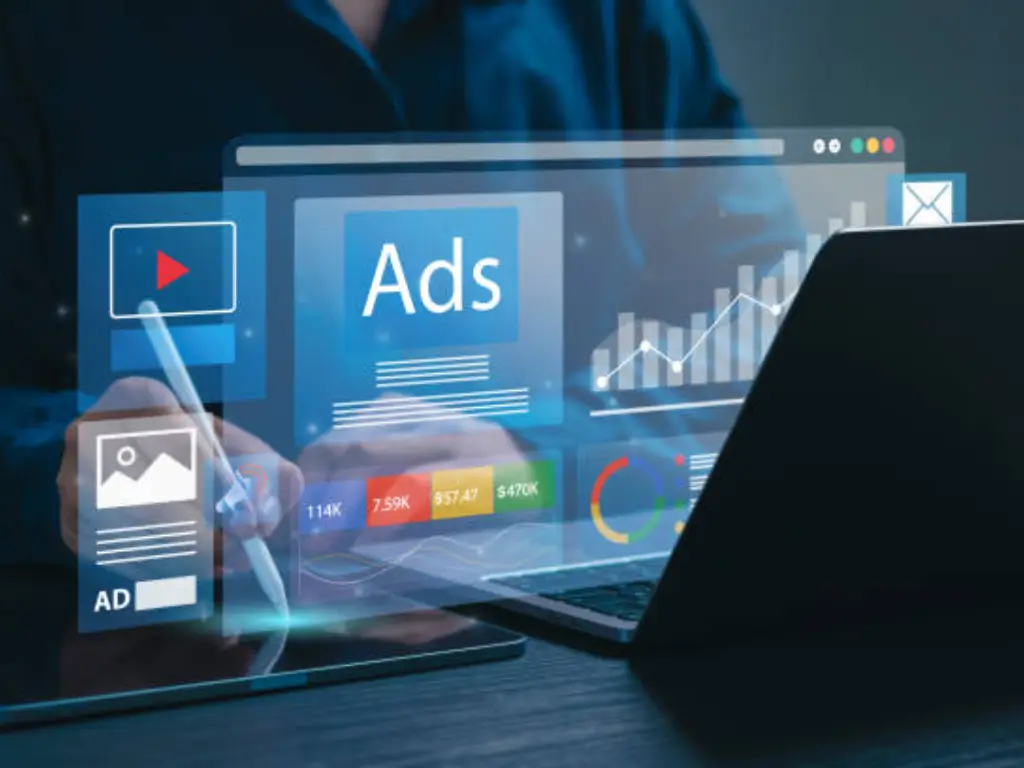
Developing an Effective Marketing Strategy: Start to Finish
Trade show marketing should be a pre-show, during-show, and post-show marketing strategy. A marketing mix is a combination of techniques that guarantees the maximum coverage and interest. To ensure that your trade show is effective, create a marketing plan that will cover the pre-show, during, and post-show.
● Pre-Show: Start with social media and content marketing to create awareness of your arrival. Employ the use of e-mail newsletters and blog articles to introduce the most important attractions at your stand, for instance, product launches or events, to potential visitors.
● During the Show: Maintain interest by posting updates on social media platforms to show what is happening at the booth and the interactions with the visitors. This real-time engagement creates a good time and brings more people to the stores, reaching out to a wider audience on social media platforms. Improve the interaction with visitors through the use of demonstrations that are relevant to the theme of your brand and the giveaways that are relevant to your brand.
● Post-Show: Finally, it is important to send follow-up emails to the attendees of the show and share with them the highlights of the show. Use social media and your blog to post about the event and keep your brand relevant and engaged with the attendees.
Building and Training Your Trade Show Team
Selecting and training the right people for your trade show can go a long way in improving your brand’s visibility. Start with the choice of people who possess the required competencies and at the same time are oriented on customers. Ensure that you offer training that covers product knowledge so that they are in a position to explain and demonstrate your products.
Focus on interpersonal skills, explain how to interact with people, and how to deliver your main messages. Also, provide them with problem-solving skills so that they can be able to deal with any arising issues with a lot of ease.
A professional and specialized team will not only improve the image of your brand but also increase the level of interaction and sales, creating long-term cooperation that may go beyond the framework of the event.
Expanding Your Network: Strategic Use of Social Media
Social networks are perfect for increasing the circle of contacts. It can be used to create awareness of your company at the trade show, to share information, and to engage with both prospective and existing clients.
To get the best out of social media at a trade show, ensure that you create real-time and interactive experiences that go beyond the trade show floor. To prepare for the show, create a social media plan that should contain the important announcements, teasers for the show, and ways to interact with the audience, including potential giveaways or swag.
In the event, use social media for real-time coverage such as live streaming of talks and demonstration of new products so that the online followers feel like they are physically present. Of the two, microblogging sites such as Twitter and Instagram are ideal for real-time communication. Hashtag your tweets and posts appropriately, and geo-tag your tweets to become part of the larger event conversation.
To increase the number of your followers, organize unique contests on social networks like photo or search contests with prizes. Remind the attendees to share their content and experiences about your booth, so that the reach of your message will expand. Engage with your audience by replying to comments and queries, which will help to create a more meaningful relationship.
Finally, continue the interaction by sharing photos and videos of the event and thanking everyone who visited your booth to sustain community engagement. Such continuous communication is useful in turning the contacts made during events into business associates, thus increasing your circle of contacts.

Leveraging Technology: Tools to Increase Management Efficiency
The use of the right event technology can go a long way in helping in the planning and management of trade shows since it can help in the automation of tasks and improve team work. An event management software is a platform where all the logistics, schedules, and tasks are coordinated to ensure that the entire team is informed and on the same page.
For lead management and follow-up, Customer Relationship Management (CRM) systems are mandatory. These tools assist in keeping records of interactions with potential clients, storing their information, and following up on them without missing any of them.
Data analytics help in understanding the attendee’s behavior and their level of engagement and thus help the teams to know what strategies were effective and which ones were not. These analytics assist in fine-tuning the strategies and making informed decisions for future occurrences.
Through these technologies, teams can improve the efficiency of their work, facilitate communication, and evaluate the results of trade show activities, which in turn will contribute to the achievement of better results and further development.
Post-Show Follow-Up and Evaluation
After the trade show is over, it is important to have a proper system of follow-up that will help to turn leads into good business prospects. First, it is necessary to categorize the leads depending on their activity and interest in the services. This enables you to target your communication efforts in the right manner and to the right people. Subsequently, send out more personalized emails or calls that mention certain discussions or topics of concern to each potential client, so that they know that they are unique and important.
Besides keeping in touch, it is crucial to evaluate the effectiveness of the trade show based on the KPIs. These may include the number of new leads generated, the number of leads that have been converted to sales, and the feedback on the interaction with the clients. Compare these outcomes to the goals that you set to determine the return on investment (ROI). Other measurements that should be taken into account include social media interaction and booth traffic data to get a full picture.
Avoiding Common Mistakes: Optimizing Trade Show Performance
To avoid pitfalls, it is recommended that you go through your trade show checklist frequently and reflect on each event. Confirm all the arrangements, delivery dates, and booth to avoid any inconvenience at the last minute.
- ● Inadequate Planning and Preparation: Lack of detailed planning may result in oversight and waste of time. To avoid this, it is recommended to create a detailed checklist that would include all the aspects, starting with logistics and ending with marketing strategies. It is advisable to go through this checklist often and make changes where necessary to check that all tasks are on schedule.
- ● Last-Minute Logistics Issues: Failure to meet key deadlines can cause a lot of havoc in the preparation of an event. Ensure that delivery dates, booth setting up, and travel plans are confirmed several weeks in advance. Contact the vendors early enough to ensure that they are available and that there will be no last-minute hitches.
- ● Poor Lead Follow-Up: This is because leads that are not followed up on as soon as possible may be lost. Adopt a systematic approach to follow up the leads by prioritizing them and following up on them at the right time. Use CRM tools to ensure that the interactions are well-managed and recorded.
- ● Weak Booth Engagement: Failure to design an interesting booth experience means that there are people who will not be reached. Create a booth that allows for engagement and at the same time displays your products in the best way possible. Engage visitors actively through the use of demonstrations, activities, and well-informed staff.
- ● Neglecting Performance Evaluation: It is almost impossible to identify the need for change without evaluating performance. Establish quantifiable objectives before the event and collect data during and after the show. It is also important to assess the effectiveness of the event through the analysis of KPIs, like lead conversion rates and engagement levels, to improve the approach towards future events.

Conclusion
Trade shows are a valuable resource for the growth of business outreach when executed effectively. The use of this guide will help exhibitors improve their planning and implementation, thus increasing brand awareness and business outcomes. Most importantly, it is continuous improvement – always asks for feedback, and analyzes each event experience to make better strategies and get better results in the next trade shows. Accept the process of change and development to achieve the maximum results at the trade show.
Bring Your Trade Show Vision to Life with Aplus Expo
Take your trade show experience to the next level with Aplus Expo, the Las Vegas-based company specializing in the US market. Our services include full-service trade show management, where we turn your ideas into reality through creative booth concepts and efficient coordination. Our project managers are fully committed to your exhibit to guarantee that it is implemented as planned without risks and costs. Our services range from custom booths to graphics printing to ensure that you get all your exhibition requirements from us. Whether you are a first-time or a veteran at trade shows, Aplus Expo enables you to concentrate on attracting the attendees while we take care of the rest. Please contact us to start your journey.

